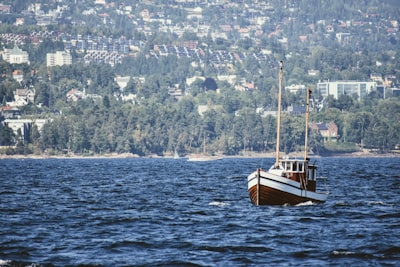Tragedy at Lake Tahoe Sparks Urgent Debate on Boating Safety and Climate Risks
When a storm capsized a boat on Lake Tahoe, claiming eight lives—including an entire Bay Area family—the shockwaves rippled far beyond the shoreline. This incident is not just a local tragedy; it is a stark illustration of the silent dangers lurking at the intersection of recreation, climate change, and public safety.
Lake Tahoe: Paradise or Peril?
Lake Tahoe, straddling California and Nevada, is revered for its breathtaking beauty and draws millions of visitors each year. But beneath its serene surface lies a wealth of risks, especially as climate volatility alters weather patterns and increases the frequency of sudden, violent storms. The recent capsizing is a chilling reminder that Tahoe's idyllic reputation is counterbalanced by unpredictable natural forces—forces that even seasoned boaters struggle to anticipate.
A Preventable Tragedy: The Safety Dilemma
Boating fatalities often spike during adverse weather, yet too many overlook or underestimate these hazards in pursuit of leisure. Experts argue the Lake Tahoe disaster could have been mitigated by stronger regulations, heightened awareness, and real-time hazard communication. For example, the U.S. Coast Guard recommends every boater wear a life jacket and check for up-to-the-minute weather alerts, but compliance remains inconsistent.
| Factor | Pro (Opportunity) | Con (Risk) |
|---|---|---|
| Recreational Freedom | Boosts tourism, community, and local economy | Overconfidence & complacency create hazards |
| Relaxed Regulations | Increases accessibility to the lake | Can result in insufficient preparedness |
| Climate Pattern Shifts | Draws more visitors during unseasonable highs | Causes unpredictable storms and wind gusts |
| Emergency Infrastructure | Regional focus increases rescue resources | Rural areas struggle with rapid response |
Hidden Societal Costs
The loss of a family underscores the broader societal impact: trauma radiates through communities, exposing a lack of robust safety nets and coordinated emergency response. In many cases, non-locals are unaware of local dangers, and regulatory authorities grapple with the challenge of balancing free access against enforcing tough safety measures.
"Everyone sees the calm waters but few prepare for what lies beneath—or what could come from above," says a local rescue official.
The Broader Climate Connection
Ten years ago, storms of such intensity were rarer; now, rapid climate shifts mean boaters are more likely to be caught off guard. Lake Tahoe’s experience is emblematic of a worldwide trend: outdoor activities are becoming riskier as weather grows less predictable, and communities need to reimagine what preparedness looks like.
Takeaway: Toward Proactive Safety Culture
The deadliness of this event demands a collective rethinking of how we approach recreation on natural bodies of water. Mandatory safety briefings, stricter regulations around storm alerts, and community-wide education are not restrictions—they are life-saving interventions. Every tragedy such as this should inspire both individuals and policymakers to act before the next storm arrives.
This article was inspired by the headline: 'Bay Area family among 8 victims identified in deadly Lake Tahoe capsizing during storm - ABC7 San Francisco'.

Comments
No comments yet. Be the first to comment!